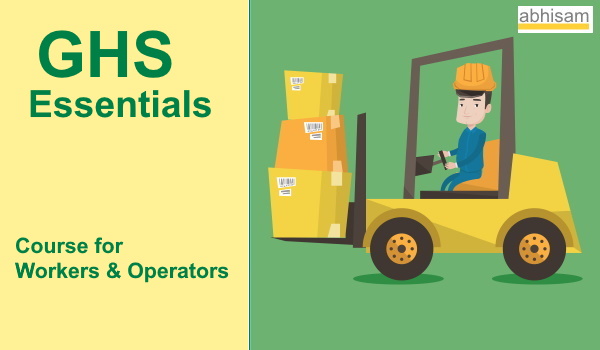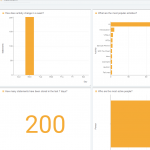What is the GHS?
GHS stands for the United Nations Globally Harmonized System for the classification and labeling of chemicals. GHS defines and classifies the hazards of chemical products, and communicates health and safety information on labels having GHS Pictograms and safety data sheets (SDS for short).
Some people incorrectly refer to this as Global Harmonization System, but the official term is Globally Harmonized System. This short Abhisam Globally Harmonized System whitepaper explains the basics of GHS.
What is the history of GHS? Why was the GHS set up?
Prior to the introduction of the Globally Harmonized System, there were multiple systems of classification and labeling of chemicals. Every country or region had a different way of classifying the same chemical. Even the hazard symbols used to show that the chemical is flammable or toxic were different.
The cost of compliance with multiple systems of classification and labeling was significant.
The goal of GHS is to have same set of rules for classifying hazards, same format and content for labels and safety data sheets (SDS) that will be adopted and used around the world. Earlier these were known as MSDS-Material Safety Data Sheets.
GHS development work for classification of chemicals began at the 1992 Rio conference on environment and development by the United Nations. In 2003, the United Nations (UN) adopted the Globally Harmonized System of Classification and Labeling of Chemicals (GHS). The current status of the GHS is given here
Is the GHS mandatory?
The GHS is theoretically a ‘non-binding‘ system of hazard communication (HazCom for short). It has developed by United Nations. However the member countries of the UN have implemented the GHS guidelines by enacting their own laws and regulations and these are binding in the respective jurisdictions. So while the original GHS was non mandatory, in practice it is as good as mandatory. So it is important that you know about it.
Which are the countries that have implemented GHS guidelines?
- Upto the year 2020, the number of countries which implemented GHS are 72. The list gets updated periodically. The remaining member countries of UN (which are 121 in number), will soon implement GHS with their own regulations which will be aligned with GHS guidelines.
- There are a total of 195 countries in the world today, out of which 193 countries are members of the United Nations (UN).
- The revisions in GHS guidelines are published in approximately 2 years time period from year 2011. The 8th edition of the GHS guidelines was published in June 2019 and is referred to as Revision 8.
How can I know more about GHS?
You can get the GHS Purple book from the United Nations bookshop. The book is known as the “Purple Book” because of the color of its cover. It is available in multiple languages.
Is there an easier way to learn about GHS?
Sure, simply take any of the Abhisam GHS Training courses online. We have two courses as given below-one for Managers and Supervisors and the other is for frontline workers who physically handle chemicals in the workplace. You can see more details about the GHS e-learn portal here.
GHS for Managers and Supervisors Training Course

This is an online e-learning course on the Abhisam Learning Portal. This course covers everything about the Globally Harmonized System Revision 8. The online Globally Harmonized System course can be taken via any device with a browser. It consists of ten modules followed by an exam. Passing this exam earns you a Certificate and an electronic badge showing that you successfully completed the Course and passed the exam. This course is very detailed and is meant for Managers and Supervisors who need to know about it in depth.
More details at the link here. (https://www.abhisam.com/globally-harmonized-system-ghs-training-online-certification)
GHS for Workers and Operators Training Course

This course covers everything that a front line worker who regularly handles chemicals needs to know regarding labels, pictograms, symbols and Safety Data Sheets. This course can be taken online via any device with a browser. Successfully completing this course earns a Certificate and an electronic badge. The cost is very low, so employers can train their entire workforce easily in GHS without breaking the budget. It can be deployed instantly.
Employers can also see a dashboard of activity that tracks progress and shows data on how many employees have taken the course, their test scores, engagement time and more. These features are available to all Enterprise customers who purchase training for 20 or more employees.
Where can I get more details?
Please contact us at sales[at] abhisam.com via email or contact us via the form below.

